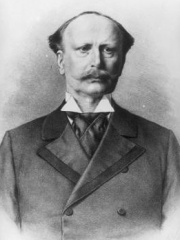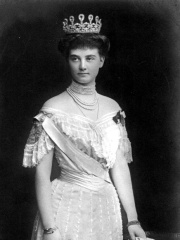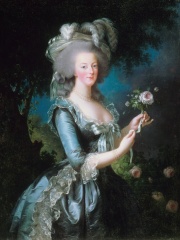
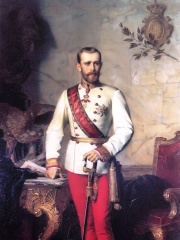
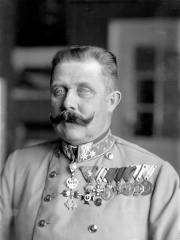
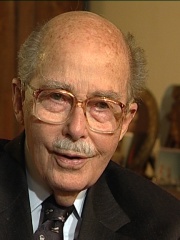
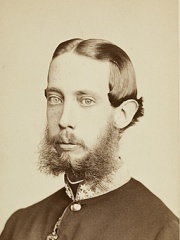
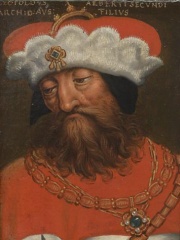
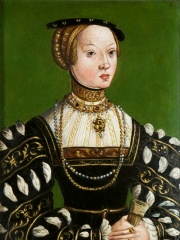
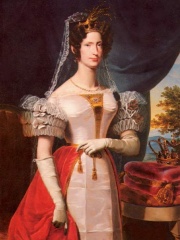
The Most Famous
NOBLEMEN from Austria
This page contains a list of the greatest Austrian Noblemen. The pantheon dataset contains 1,415 Noblemen, 39 of which were born in Austria. This makes Austria the birth place of the 5th most number of Noblemen behind Italy, and United Kingdom.
Top 10
The following people are considered by Pantheon to be the top 10 most legendary Austrian Noblemen of all time. This list of famous Austrian Noblemen is sorted by HPI (Historical Popularity Index), a metric that aggregates information on a biography's online popularity. Visit the rankings page to view the entire list of Austrian Noblemen.

1. Marie Antoinette (1755 - 1793)
With an HPI of 87.43, Marie Antoinette is the most famous Austrian Nobleman. Her biography has been translated into 101 different languages on wikipedia.
Marie Antoinette (; French: [maʁi ɑ̃twanɛt] ; Maria Antonia Josefa Johanna; 2 November 1755 – 16 October 1793) was the last queen of France before the fall of the monarchy during the French Revolution. She was the wife of King Louis XVI. Born an archduchess of Austria, she was the penultimate child and youngest daughter of Empress Maria Theresa and Emperor Francis I of the Holy Roman Empire. She married Louis Auguste, Dauphin of France, in May 1770 at age 14, becoming the Dauphine of France. On 10 May 1774, her husband ascended the throne as king, and she became queen. As queen, Marie Antoinette became increasingly a target of criticism by opponents of the domestic and foreign policies of Louis XVI and those opposed to the monarchy in general. The French libelles accused her of being profligate, promiscuous, having illegitimate children, and harboring sympathies for France's perceived enemies, including her native Austria. She was falsely accused of defrauding the Crown's jewelers in the Affair of the Diamond Necklace, but the accusations still damaged her reputation. During the French Revolution, she became known as Madame Déficit because the country's financial crisis was blamed on her lavish spending and her opposition to social and financial reforms proposed by Anne Robert Jacques Turgot and Jacques Necker. Several events were linked to Marie Antoinette during the Revolution after the government placed the royal family under house arrest in the Tuileries Palace in October 1789. The June 1791 attempted flight to Varennes and her role in the War of the First Coalition were immensely damaging to her image among French citizens. On 10 August 1792, the attack on the Tuileries forced the royal family to take refuge at the Legislative Assembly, and they were imprisoned in the Temple Prison on 13 August 1792. On 21 September 1792, France was declared a republic and the monarchy was abolished. Louis XVI was executed by guillotine on 21 January 1793. Moved to the Conciergerie, Marie Antoinette's trial began on 14 October 1793; two days later, she was convicted by the Revolutionary Tribunal of high treason and executed by guillotine on 16 October 1793 at the Place de la Révolution.

2. Rudolf, Crown Prince of Austria (1858 - 1889)
With an HPI of 82.72, Rudolf, Crown Prince of Austria is the 2nd most famous Austrian Nobleman. His biography has been translated into 47 different languages.
Rudolf, Crown Prince of Austria (Rudolf Franz Karl Josef; 21 August 1858 – 30 January 1889) was the only son and third child of Emperor Franz Joseph I and Empress Elisabeth of Austria. He was heir apparent to the imperial throne of the Austro-Hungarian Empire from birth. In 1889, he died in a suicide pact with his mistress Baroness Mary Vetsera at the Mayerling hunting lodge. The ensuing scandal made international headlines.

3. Archduke Franz Ferdinand of Austria (1863 - 1914)
With an HPI of 82.65, Archduke Franz Ferdinand of Austria is the 3rd most famous Austrian Nobleman. His biography has been translated into 96 different languages.
Archduke Franz Ferdinand Carl Ludwig Joseph Maria of Austria (Francis Ferdinand, 18 December 1863 – 28 June 1914) was the heir presumptive to the throne of Austria-Hungary. His assassination in Sarajevo was the most immediate cause of World War I. Franz Ferdinand was the eldest son of Archduke Karl Ludwig of Austria, the younger brother of Emperor Franz Joseph I of Austria. Following the death of Crown Prince Rudolf in 1889 and the death of Karl Ludwig in 1896, Franz Ferdinand became the heir presumptive to the Austro-Hungarian throne. His courtship of Sophie Chotek, a lady-in-waiting, caused conflict within the imperial household, and their morganatic marriage in 1900 was only allowed after he renounced his descendants' rights to the throne. Franz Ferdinand held significant influence over the military, and in 1913 he was appointed inspector general of the Austro-Hungarian armed forces. On 28 June 1914, Franz Ferdinand and his wife were assassinated in Sarajevo by the 19-year-old Gavrilo Princip, a member of Young Bosnia. Franz Ferdinand's assassination led to the July Crisis and precipitated Austria-Hungary's declaration of war against Serbia, which in turn triggered a series of events that eventually led – four weeks after his death – to Austria-Hungary's allies and Serbia's allies declaring war on each other, starting World War I.

4. Otto von Habsburg (1912 - 2011)
With an HPI of 78.47, Otto von Habsburg is the 4th most famous Austrian Nobleman. His biography has been translated into 61 different languages.
Otto von Habsburg (20 November 1912 – 4 July 2011) was the last crown prince of Austria-Hungary from 1916 until its dissolution in November 1918. In 1922, he became the pretender to the former thrones, head of the House of Habsburg-Lorraine, and sovereign of the (Austrian) Order of the Golden Fleece, upon the death of his father. He resigned as Sovereign of the Golden Fleece in 2000 and as head of the Imperial House in 2007. The eldest son of Charles I and IV, the last emperor of Austria and king of Hungary, and his wife, Zita of Bourbon-Parma, Otto was born as Franz Joseph Otto Robert Maria Anton Karl Max Heinrich Sixtus Xaver Felix Renatus Ludwig Gaetan Pius Ignatius von Habsburg, third in line to the thrones, as Archduke Otto of Austria, Royal Prince of Hungary, Bohemia, and Croatia. With his father's accession in 1916, he was likely to become emperor and king. As his father never abdicated, Otto was considered by himself, his family and Austro-Hungarian legitimists to be the rightful emperor-king from his father's death in 1922. Otto was exiled in 1919 and grew up mostly in Spain. His devout Catholic mother raised him according to the old curriculum of Austria-Hungary, preparing him to become a Catholic monarch. During his life in exile, he lived in Austria, Belgium, France, Madeira (Portugal), Spain, Switzerland, the US, and from 1954 until his death, in Bavaria (Germany), in the residence Villa Austria. He had been stateless de jure and de facto, and possessed passports of the Order of Malta and Spain. Otto was active on the European political stage from the 1930s, by promoting the cause of Habsburg restoration and as an early proponent of European integration. He was a fierce opponent of Nazism, nationalism, and communism. He has been described as one of the leaders of the Austrian resistance. After the 1938 Anschluss, he was sentenced to death by the Nazis and fled Europe to the US. Otto was Vice President (1957–73) and President (1973–2004) of the International Paneuropean Union movement. From 1979 to 1999, he served as a Member of the European Parliament for Germany's Christian Social Union of Bavaria (CSU). He took a strong interest in Eastern Bloc countries behind the Iron Curtain, and had an empty chair set up in the European Parliament to symbolize their absence. Otto played a notable role in the revolutions of 1989 as a co-initiator of the Pan-European Picnic. He was a strong supporter of EU membership for Central and Eastern European countries. He published several books on historical and political affairs. Otto has been described as one of the "architects of the European idea and of European integration" together with Robert Schuman, Konrad Adenauer, and Alcide De Gasperi. His funeral took place at St. Stephen's Cathedral in Vienna on 16 July 2011; he was entombed in the Imperial Crypt in Vienna and his heart buried in Pannonhalma Archabbey in Hungary.

5. Mariana of Austria (1634 - 1696)
With an HPI of 75.92, Mariana of Austria is the 5th most famous Austrian Nobleman. Her biography has been translated into 44 different languages.
Mariana of Austria (24 December 1634 – 16 May 1696) was Queen of Spain from 1649 until her husband Philip IV of Spain died in 1665. Appointed Regent for their infant son Charles II, she remained an influential figure until her own death in 1696. Her regency was overshadowed by the decline of Spain in the second half of the 17th century, and internal political divisions, combined with a general European economic crisis. Charles died without children in 1700, leading to the 1701 to 1714 War of the Spanish Succession.

6. Archduke Ludwig Viktor of Austria (1842 - 1919)
With an HPI of 75.78, Archduke Ludwig Viktor of Austria is the 6th most famous Austrian Nobleman. His biography has been translated into 27 different languages.
Archduke Ludwig Viktor Joseph Anton of Austria (15 May 1842 – 18 January 1919) was the youngest child of Archduke Franz Karl of Austria and Princess Sophie of Bavaria, and the youngest brother of Emperor Franz Joseph I. He had a military career, as was usual for archdukes, but did not take part in politics. He was openly homosexual and declined to marry princesses who were sought for him. He is well-known for his art collection and patronage as well as philanthropy.

7. Leopold III, Duke of Austria (1351 - 1386)
With an HPI of 71.06, Leopold III, Duke of Austria is the 7th most famous Austrian Nobleman. His biography has been translated into 36 different languages.
Leopold III (1 November 1351 – 9 July 1386), known as the Just, a member of the House of Habsburg, was duke of Austria from 1365. As head and progenitor of the Leopoldian line, he ruled over the Inner Austrian duchies of Carinthia, Styria and Carniola as well as the County of Tyrol and Further Austria from 1379 until his death.

8. Elizabeth of Austria (1526 - 1545)
With an HPI of 69.73, Elizabeth of Austria is the 8th most famous Austrian Nobleman. Her biography has been translated into 26 different languages.
Elizabeth of Austria (Polish: Elżbieta Habsburżanka, Lithuanian: Elžbieta Habsburgaitė; 9 July 1526 – 15 June 1545) was Queen of Poland and Grand Duchess of Lithuania by marriage. She was the eldest of fifteen children of Ferdinand I, Holy Roman Emperor, and his wife Anne of Bohemia and Hungary. A member of the House of Habsburg, she was married to Sigismund II Augustus, who was already crowned as King of Poland and Grand Duke of Lithuania even though both of his parents were still alive and well. The marriage was short and unhappy. Elizabeth was of frail health, experiencing epileptic seizures, and died at age 18.

9. Maria Theresa of Austria (1801 - 1855)
With an HPI of 69.10, Maria Theresa of Austria is the 9th most famous Austrian Nobleman. Her biography has been translated into 26 different languages.
Maria Theresa of Tuscany (21 March 1801 – 12 January 1855) was Queen of Sardinia by marriage to King Charles Albert of Sardinia. She was a daughter of Ferdinand III, Grand Duke of Tuscany and Luisa of Naples and Sicily. She was named after her great-grandmother Empress Maria Theresa. In 1817, she married Charles Albert of Sardinia and subsequently became the Queen of Sardinia upon her husband's accession to the throne in 1831.
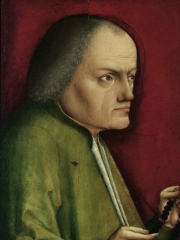
10. Sigismund, Archduke of Austria (1427 - 1496)
With an HPI of 68.39, Sigismund, Archduke of Austria is the 10th most famous Austrian Nobleman. His biography has been translated into 27 different languages.
Sigismund (26 October 1427 – 4 March 1496), a member of the House of Habsburg, was Duke of Austria from 1439 (elevated to Archduke in 1477) until his death. As a scion of the Habsburg Leopoldian line, he ruled over Further Austria and the County of Tyrol from 1446 until his resignation in 1490.
People
Pantheon has 39 people classified as Austrian noblemen born between 1262 and 1999. Of these 39, 1 (2.56%) of them are still alive today. The most famous living Austrian noblemen include Princess Alexandra of Hanover. The most famous deceased Austrian noblemen include Marie Antoinette, Rudolf, Crown Prince of Austria, and Archduke Franz Ferdinand of Austria.
Living Austrian Noblemen
Go to all RankingsDeceased Austrian Noblemen
Go to all RankingsMarie Antoinette
1755 - 1793
HPI: 87.43
Rudolf, Crown Prince of Austria
1858 - 1889
HPI: 82.72
Archduke Franz Ferdinand of Austria
1863 - 1914
HPI: 82.65
Otto von Habsburg
1912 - 2011
HPI: 78.47
Mariana of Austria
1634 - 1696
HPI: 75.92
Archduke Ludwig Viktor of Austria
1842 - 1919
HPI: 75.78
Leopold III, Duke of Austria
1351 - 1386
HPI: 71.06
Elizabeth of Austria
1526 - 1545
HPI: 69.73
Maria Theresa of Austria
1801 - 1855
HPI: 69.10
Sigismund, Archduke of Austria
1427 - 1496
HPI: 68.39
Prince Aloys of Liechtenstein
1869 - 1955
HPI: 68.38
Princess Alexandra of Hanover
1882 - 1963
HPI: 67.94
Overlapping Lives
Which Noblemen were alive at the same time? This visualization shows the lifespans of the 25 most globally memorable Noblemen since 1700.


